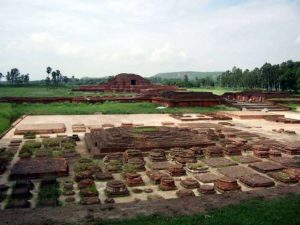
One of the principles of Humanistic Buddhism, as promoted by Master Hsing Yun of Fo Guang Shan, stresses that Buddhism is not only for the deceased but for the living as well. It is said: “Buddhism is living life, making life happier and family life more joyful, and adding harmony to human relations, the mind, and the spirit.” (Venerable Master Hsing Yun 2005, x) In common discourse, Buddhists took this framing as reorienting Buddhism’s priorities toward the living, rather than administering ritualistic ceremonies for the deceased. However, toward the end of life, there is an intermediary state for those who are still living but will shortly meet death: the dying.
This perfectly natural and inevitable experience has traditionally been treated as taboo. There is an increasing sense, however, that avoiding the subject is neither healthy nor helpful. By the end of 2019, the number of residents aged 60 years or older in Shanghai stood at 5.2 million, a staggering 35 percent of the city’s registered population. This means that a third of the city is in need of the pastoral care from which people living with their mortality will benefit immeasurably, despite social taboos about death and dying.
The more-than-130-year-old Jade Buddha Temple in Shanghai is running a program that tends to those approaching the end of their lives, mostly the old and terminally ill. It recently signed an agreement with the Community Health Association of Shanghai to train a group of 44 students at community health centers in a six-day training session that was completed on 1 November last year. The student roster is diverse, from as young as 18 up to 62. The training will take graduates beyond the program to let them volunteer in local hospitals and nursing homes.
“Shanghai, as a megacity, has an increasingly graying population,” said Ven. Jue Xing, the abbot of the temple. “We believe that all of society should pay attention to hospice care under such circumstances. To better meet these social demands, we launched this project.” (SHINE News)
He is not alone: Wang Fengshuo also teaches classes at Jade Buddha Temple, her focus being on the philosophy of life and death. As a postgraduate of Buddhist studies at Harvard University’s Divinity School and a member of the US Spiritual Care Association, she believes that philosophers from both the East and the West “share a common focus on life and death.” She has been participating in life-care work for the temple foundation since 2018, stating: “An urban temple in downtown Shanghai is an ideal place to promote Buddhist thanatology (the study of death) and meet the needs of modern people.” (SHINE News)
To the average layperson, thanatology is a little-known aspect of Buddhism. Yet, as Ven. Jue Xing declared, “It was the original purpose of Buddha to help people relieve the pain of birth, aging, illness, and death.” (SHINE News)
It is also at the very core of one of China’s most enduring and widespread Buddhist traditions, the Pure Land school. It does not simply mean providing dignity, comfort, and peace to dying people, but further includes teaching the soteriological and eschatological dimensions. The latter consists of the teaching and assurance of the Buddha-recitation (nianfo) practice and drawing closer to the Buddha of Infinite Light.
Pure Land thanatology revolves around the 18th Vow, otherwise known as the Primal Vow or Fundamental Vow, which Amitabha has already fulfilled and is therefore a timeless reality: “If, when I attain buddhahood, sentient beings in the lands of the ten directions who sincerely and joyfully entrust themselves to me, desire to be born in my land, and recite my Name, even ten times, should not be born there, may I not attain perfect Enlightenment. Excluded, however, are those who commit the five gravest offences and abuse the right Dharma.”
The Buddhist approach to thanatology is therefore to assist the person approaching death, to deconstruct their fear of the end, entrust their existence and future buddhahood to Amitabha, and on this basis of “ultimate assurance,” live life to the very fullest while nurturing their relationships and making peace with damaged ones.
There is every religious impetus to demystify and deconstruct the social and cultural taboos that have arisen about talking about dying and death. While it need not be the main subject of polite talk at parties and will always require a level of trust and intimacy—hence the emphasis on professional training—to be able to talk openly about the reality and inevitability of death is critical to societal well-being.
There are signs that palliative care is entering the mainstream: all 246 community health centers in Shanghai have begun hospice care programs. As of August 2020, the city health authorities said that some 11,600 terminally ill people had received hospice services. The next step for Dharma communities is to bring Buddhist thanatology to new prominence among institutions of palliative care. This has always been a critical aspect of the Dharma, particularly Pure Land Buddhism. In fact, people thirst for its eternal reassurance more than ever.
References
Venerable Master Hsing Yun. 2005. Humanistic Buddhism: A Blueprint for Life. Translated by John Balcom, PhD. Los Angeles: Buddha’s Light Publishing.
See more
Buddhist temple shines its spiritual light on plight of the terminally ill (SHINE News)
Related columns from Buddhistdoor Global
Death Dhamma by Margaret MeloniBuddhistdoor Global special project












